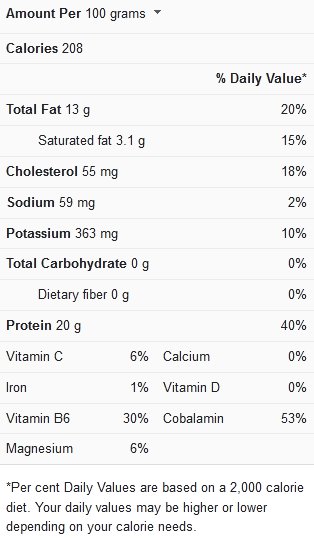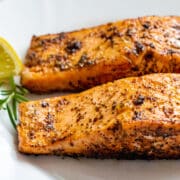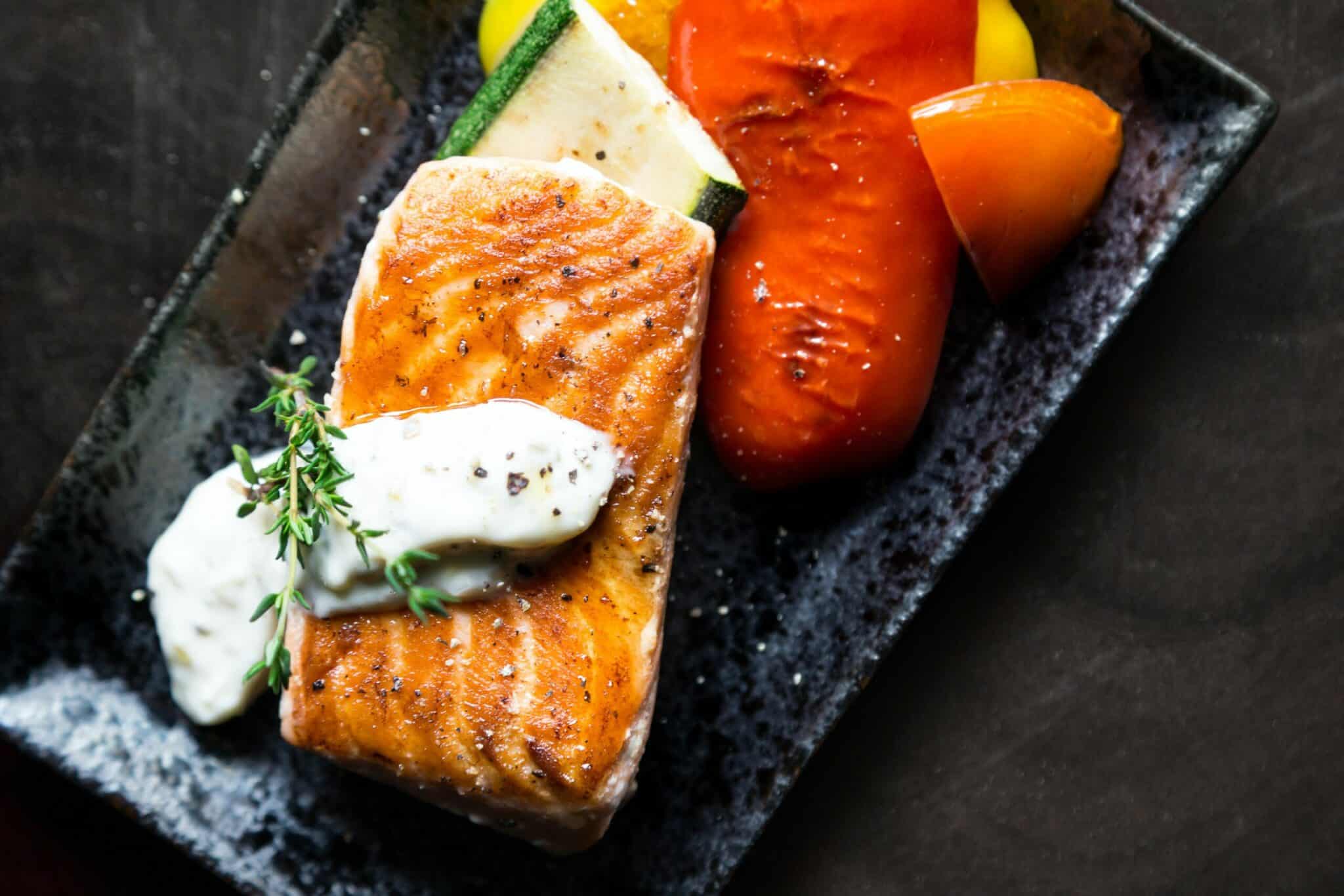Not everyone knows the right things to do in order to bake salmon to perfection in terms of flavor and texture. One of the most crucial variables in determining how well your cooking will turn out is knowing how long to bake salmon for, as well as the ideal temperature. Since it has already been established that 400 degrees Fahrenheit is the ideal cooking temperature, what’s left is to find out the ideal cooking duration.
If you’re one of such people that is always confused about what to do with salmon, this how-to guide will show you helpful tips, cooking guidelines, and instructions so that you can achieve excellent results with baked salmon every time.
Salmon Nutrition Facts

Tips for cooking salmon in oven
We have compiled a number of helpful tips, recommendations, and cooking guidelines below to guide you to the best results when cooking salmon in the oven:
Seasoning suggestions – You don’t need a lot of flavors to make a tasty dish with baked salmon recipes, and that is perhaps one of the best things about cooking salmon in the oven. You could easily just season your salmon with salt and pepper because if you want to properly bring out the excellent salmon flavor, it’s best to keep things as simple as possible. In case you’d rather spice things up a little more, we have provided some extra seasoning suggestions below:
- Add a bit of salt, garlic powder, and black pepper, along with a splash of fresh lemon juice, for a traditional salmon serving.
- For an extra spicy kick, include a bit of paprika and cayenne pepper.
- If you’d like to enhance the salmon’s flavor without overpowering it, use some fresh herbs such as dill and/or parsley.
- Toss the salmon with pesto for a delicious way to amp up the taste.
- You can also add a sprinkle of curry powder for a tasty variation.
Ideal cooking duration – Salmon filets take around 10 to 14 minutes in the oven at 400 degrees F. However, because every salmon filet is distinctive in terms of fat content, thickness, and cut size, there is no set bake time to follow. All that really matters is for the salmon filets to achieve the desired internal temperature.
When the salon’s flesh is opaque and easily flakes from the filet, you’ll know that the salmon is done. If you’re unsure whether the salmon is cooked through, use a probe thermometer to check its interior temperature.
The salmon is ready to eat when it reaches a minimum temperature of 125 to 130 degrees F for medium degree of doneness, or 140 degrees F for well done, which takes around 10 to 14 minutes (based on the size of the filets you’re cooking). If you overcook your salmon, it will develop a harsh, dry, and unpleasant quality.
Ideal internal temperature – When the salmon filets reach an internal temperature of 110°F to 145°F (43°C to 63°C), depending on how do you want them, they are ready to eat.
You may prefer the results of your cooking to be medium-rare, medium, or well done. Below are the required internal temperatures for all three doneness levels:
- Medium-rare: 110 to 115 degrees Fahrenheit
- Medium: 120 to 125 degrees Fahrenheit
- Well-done: 145 degrees Fahrenheit
Working with frozen salmon – When immersed in cold water (while still in the plastic bag you used to preserve it), salmon thaws rapidly, but in the event that you absolutely have no time to do so, there’s no need to worry. Salmon can be baked right from the freezer. The cooking time will just be longer, but the end result will be a fantastic feast.
To cook salmon from frozen, simply heat up your oven to the required temperature of 400 degrees Fahrenheit. Season the salmon as needed and arrange it with the skin side facing downwards in a baking pan or casserole dish lined with parchment paper. Bake the salmon for about 30 minutes, or until it develops a flaky quality and the internal temperature reaches 125°F.
View this post on Instagram
Cooking Time for Salmon in Oven at 400
Keep the following timing guidelines in mind when cooking salmon in the oven at 400 degrees Fahrenheit:
| Cooking procedure | Cooking time |
| Cooking salmon in the oven at 400 degrees Fahrenheit | 10 to 14 minutes |

Baked salmon (4 servings)
Ingredients
- 4 salmon filets (preferably wild-caught)
- Olive oil
- Kosher salt and freshly ground pepper
- Lemon zest (optional ingredient)
- Lemon wedges
- Chopped fresh herbs (parsley or chives will work, depends on your preference)
Instructions
- Heat up your oven to 400 degrees Fahrenheit.
- Allow the salmon to reach room temperature while the oven warms up. This will aid in the promotion of even cooking. Make sure not to leave the salmon out for any longer than is absolutely necessary.
- Place the filets on a parchment-lined baking dish; do this after patting them dry using paper towels. Apply olive oil to all sides of the filets by drizzling or brushing it on. Season the filets afterwards with kosher salt, freshly ground pepper, and lemon zest in an equal layer.
- Bake the salmon filets until the internal temperature gets to 125 to 130 degrees Fahrenheit for a medium level of doneness, or 140 degrees F for well done. This should take about 10 to 14 minutes but the size of the filets you’re cooking will determine this. Make sure the salmon filets are positioned with the skin side facing down on the baking sheet. When checking for doneness, always make use of a probe thermometer.
- Transfer the salmon to serving plates with care and garnish them with a drizzle of lemon juice, extra virgin olive oil, a pinch of sea salt, and some fresh herbs.
Baked salmon recipes are quite easy to cook, and as long as you’re following the right cooking instructions and timing guidelines, you can be assured of mouthwatering results. The entire cooking time for this recipe is 19 minutes, including a prep time of 5 minutes and a cook time of 14 minutes. So, it’s quick as well as easy to get from start to finish.
If you’re interested in more recipe ideas for baked salmon at 400 degrees, then we suggest that you watch this video recipe.
